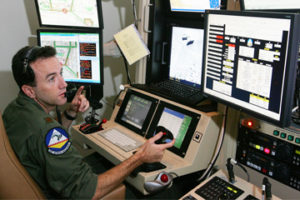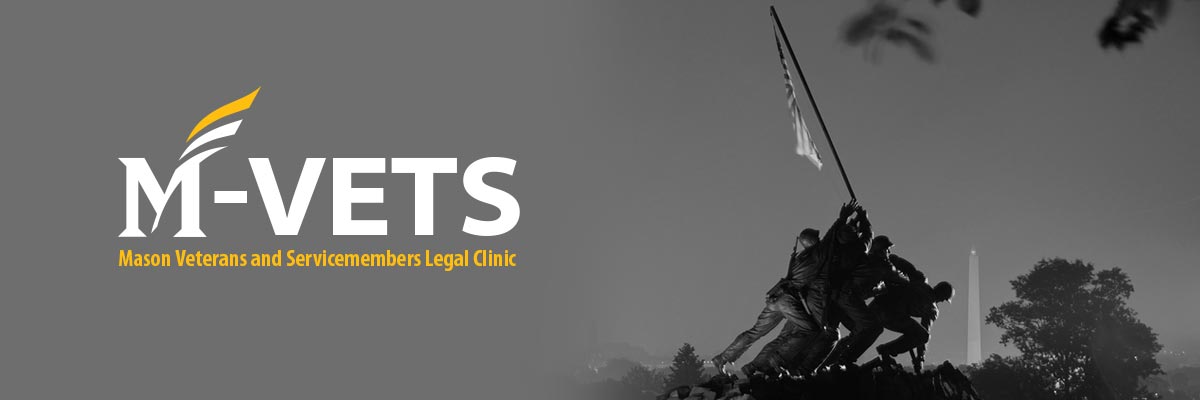
By Spring 2019 M-VETS Student-Advisor
When considering post-traumatic stress (PTS), the first thought that comes to mind is a veteran returning from a theatre of combat. Due to technological advances, the Department of Veteran’s Affairs (VA) must be prepared to deal with the increase of drone pilots who suffer from PTS. Historically, PTS has been an underdiagnosed condition, which has left many servicemembers without the assistance they need to recover. This blog post discusses the history of PTS and how PTS in drone pilots is a problem that the VA should address.
History of PTS
Writing for the VA, Matthew J. Friedman, MD, PhD outlines how PTS has been a noticeable concept in literature since Shakespeare’s Henry IV.[1] Friedman discusses how the originators of the PTS diagnoses (then called PTSD), considered occasions like “war, torture, rape, the Nazi Holocaust, the atomic bombings of Hiroshima and Nagasaki, natural disasters, and human-made disasters”[2] to be triggers for PTS. The originators clearly separated these triggers from other stressors such as “divorce, failure, rejection, serious illness, financial reverses, and the like.”[3]
Despite the fact that the originators considered events like Hiroshima and Nagasaki to be triggers for PTS, and common symptoms have been discussed at least as early as Shakespeare, it was not until the Vietnam War that the United States began paying attention to the condition.[4] In 1952, the American Psychiatric Association categorized combat stress as a “gross stress reaction.”[5] However, “combat stress” disappeared from the APA’s list of conditions in 1968. The lack of urgency with which the medical profession considered the mental effects of PTS shows that it was not taken as seriously as it should have been.
In 1980, the APA formally recognized PTS as an anxiety disorder.[6] Vietnam veterans are one of the more studied groups of veterans suffering from PTS. Common symptoms that they suffer are “combat flashbacks, intense memories or recurrent dreams of the traumatic event, or the feeling that the stressor is reoccurring.”[7] Further symptoms that are indicative of PTS are a lack of “responsiveness to the outside world evidenced by diminished interest in significant activities, feelings of detachment or estrangement, or repressed emotions.”[8] Lastly, veterans commonly report feeling at least two of the following symptoms “hyperalertness, sleep disturbance, survivor guilt, memory impairment, avoidance of activities reminiscent of the trauma, and intensification of symptoms after exposure to stimulia resembling the stressor.”[9]
Vietnam veterans have described which lead to them reliving events that took place during their deployment.[10] The flashbacks vary in their length and can occur years after the stressor occurred.[11]
Current Issue with Drone Pilots
Current service members must now confront a new medical issue, and it is not one that should take years for the medical community to address. Specifically, today’s servicemembers face the stigma of conducting warfare behind a computer screen from hundreds – if not thousands – of miles away from the theatre of war. While a drone pilot may not fear that their life is in danger, it has been shown that they have “significant incidence rates for several psychiatric disorders, including PTSD.”[12]
Rachel Martin reported for NPR that seventeen percent of active duty drone pilots are “clinically distressed,” and twenty-nine percent report a lesser level of burnout and fatigue that does not rise to the level of affecting their work and family.[13] A 2013 study showed that drone pilots are as susceptible to PTS at the same rate as pilots who fly in aircraft.[14] Although drone pilots who suffer from PTS are outnumbered by servicemembers who serve in traditional combat roles, it is important to remember that warfare is constantly evolving. The evolution of warfare requires a corresponding battle against the societal effects of PTS. Like the war that caused it, each battle against PTS is unique and necessitates its own approach. Rather than take years to address the issue as was done in the past, the VA should take proactive steps to aid drone pilots rather than allow them to suffer like the Vietnam War servicemembers.
Proposal/Conclusion
The current method for diagnosing PTS is too complex. The VA should make the service-connection process of PTS a three-pronged test. In Sarah Mayes’s article, Unraveling the PTSD Paradox: A Proposal to Simplify the Adjudication of Claims for Service Connection for Posttraumatic Stress Disorder, she recommends writing the test as “(1) current diagnosis, (2) incurrence in service, and (3) nexus”[15] Mayes argues that this is beneficial because it will not only offer immediate benefits to the decisions of current PTS claims, but will help streamline the process and make the VA better prepared for the future since there will not be as many factors to consider.[16] This is a good first step to assist drone pilots with PTS claims.
The United States realized too late that the burden of Vietnam servicemembers, who are suffering from PTS, required treatment. Although the stigma of PTS is still pervasive, the willingness of the medical community to help the Vietnam servicemembers heal has gone a long way to improving the situation. This willingness has resulted in a slow growth in sympathy for servicemembers suffering from PTS.[17] To better be prepared for an increase in PTS claims from drone pilots and to quickly curb the stigma that drone pilots should not have PTS because they were not physically in danger, the VA should take steps to streamline the application process and raise awareness about the budding problem.
[1]Matthew J. Friedman, PTSD History and Overview, U.S. Dep’t of Veterans Affairs,
https://www.ptsd.va.gov/professional/treat/essentials/history_ptsd.asp.
[2] Id.
[3] Id.
[4] Michael J. Davidson, Post-Traumatic Stress Disorder: A Controversial Defense for Veterans of A Controversial War, 29 Wm. & Mary L. Rev. 415, 418 (1988).
[5] J. CARD, LIVES AFTER VIETNAM 103 (1983) (discussing AMERICAN PSYCHIATRIC ASS’N, DIAGNOSTIC AND STATISTICAL MANUAL OF MENTAL DISORDERS (1st ed. 1952)).
[6] AMERICAN PSYCHIATRIC ASS’N, DIAGNOSTIC AND STATISTICAL MANUAL OF MENTAL DISORDERS (3d ed. 1980).
[7] Michael J. Davidson, Post-Traumatic Stress Disorder: A Controversial Defense for Veterans of A Controversial War, 29 Wm. & Mary L. Rev. 415, 421 (1988).
[8] Id.
[9] Id.
[10] Id.
[11] AMERICAN PSYCHIATRIC ASS’N, DIAGNOSTIC AND STATISTICAL MANUAL OF MENTAL DISORDERS (3d ed. 1980).
[12] Sarah K. Mayes, Unraveling the Ptsd Paradox: A Proposal to Simplify the Adjudication of Claims for Service Connection for Posttraumatic Stress Disorder, 6 Veterans L. Rev. 125, 183 (2014).
[13] Rachel Martin, Report: High Levels of ‘Burnout’ in U.S. DronePilots, NAT’L PUB. RADIO (Dec. 18, 2011, 6:01 PM), http://www.npr.org/2011/12/19/143926857/report-high-levels-of-burnout-in-u-s-drone-pilots.
[14] Hernando J. Ortega, Jr., Editorial, Challenges in Monitoring and Maintaining the Health of Pilots Engaged in Telewarfare, 20 MED. SURVEILLANCE MONTHLY REP. 2, 2 (2013).
[15] Sarah K. Mayes, Unraveling the Ptsd Paradox: A Proposal to Simplify the Adjudication of Claims for Service Connection for Posttraumatic Stress Disorder, 6 Veterans L. Rev. 125, 185 (2014)
[16] Id.
[17] Michael J. Davidson, Post-Traumatic Stress Disorder: A Controversial Defense for Veterans of A Controversial War, 29 Wm. & Mary L. Rev. 415, 439 (1988)
